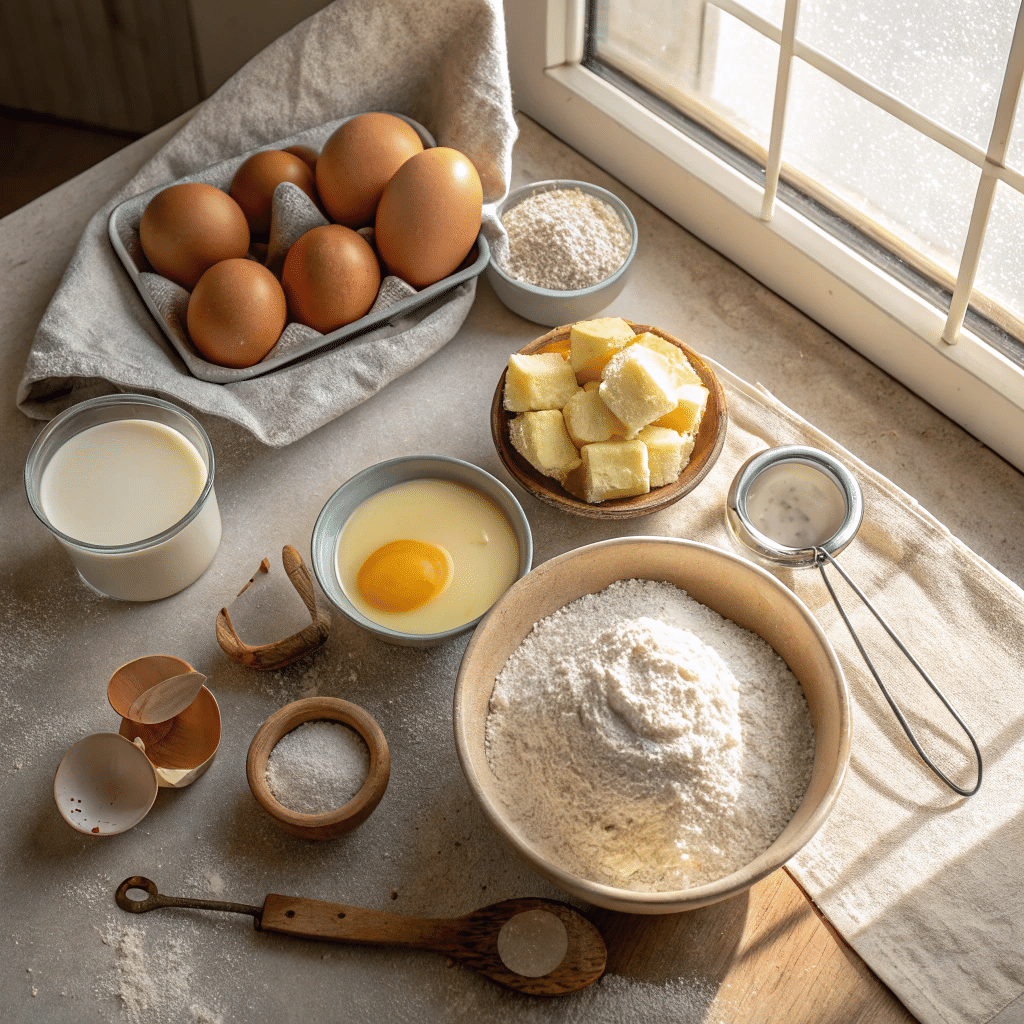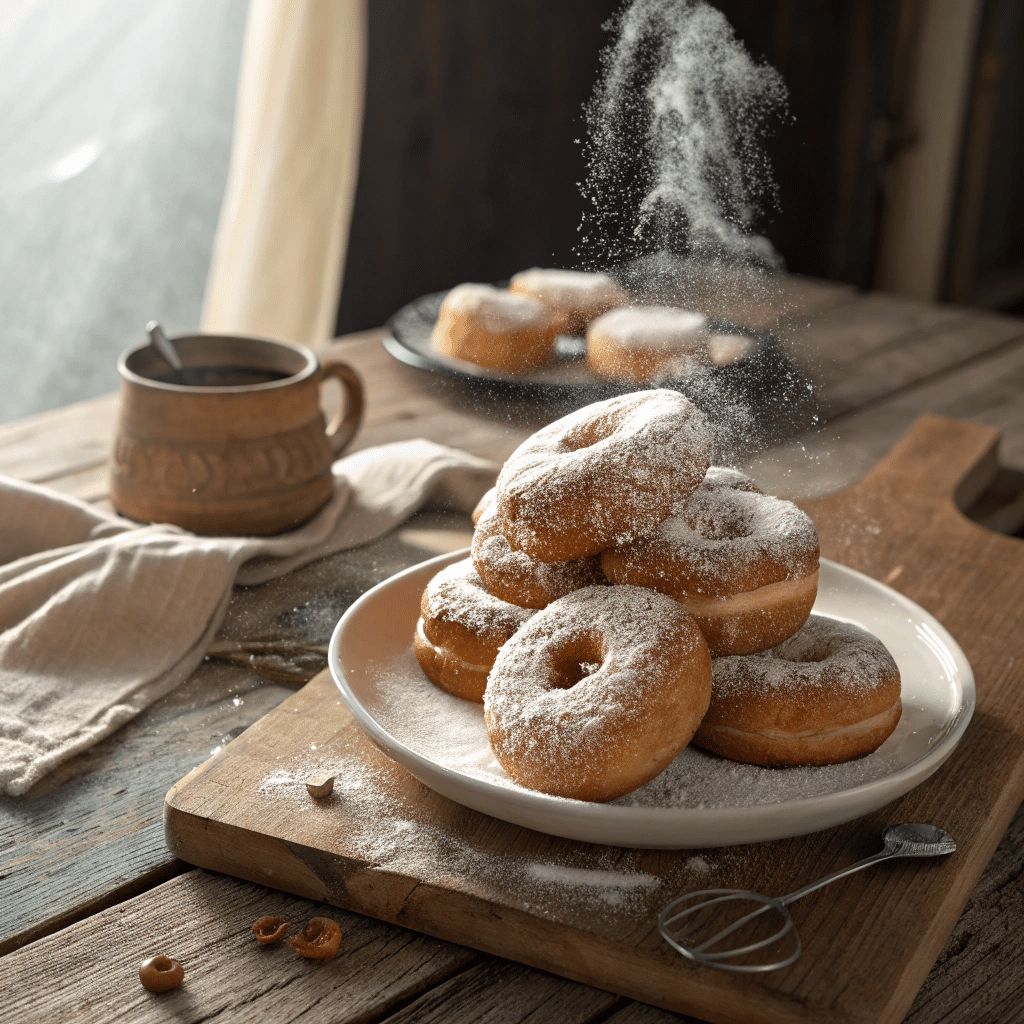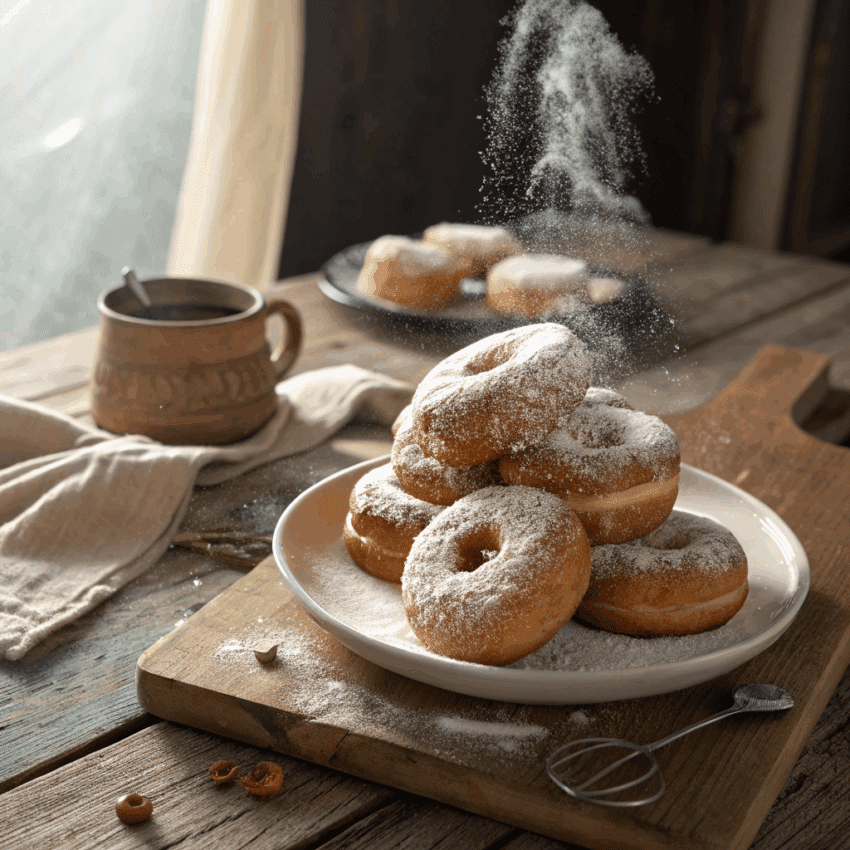There’s something magical about a warm, freshly fried donut — that first bite that’s crisp on the outside, pillowy inside, and just sweet enough to make you close your eyes for a second.
Now imagine that donut carrying generations of stories — of German kitchens, Pennsylvania Dutch gatherings, and Shrove Tuesday mornings. That’s what Fastnachts are all about.
These traditional German donuts aren’t your average coffee shop treat. They’re deep-rooted in heritage, made with simple ingredients, and loaded with love. Let’s dive into the history, how to make them at home, and why every bite feels like a sweet nod to old-world comfort.
What Are Fastnachts?
“Fastnacht” (pronounced fos-nokt) literally means “Fast Night” — the night before Lent begins.
Traditionally, German families would use up their sugar, butter, and lard before Ash Wednesday. The solution? Fry them into golden, irresistible donuts.
When German immigrants brought the recipe to America, it became a big hit in Pennsylvania Dutch and Amish communities. Today, people still celebrate Shrove Tuesday — or Fastnacht Day — with these fried beauties before the fasting season begins.
Whether you call them Amish donuts, Pennsylvania Dutch donuts, or simply Fastnachts, one thing’s certain: they’re the kind of treat that brings people together.
Ingredients You’ll Need

You don’t need anything fancy — just pantry staples and a little patience.
- 1 cup mashed potatoes (plain, not seasoned)
- ½ cup butter, softened
- 1 cup sugar
- 3 large eggs
- 1 cup milk, warm
- 1 package (2¼ tsp) active dry yeast
- 5–6 cups all-purpose flour
- ½ tsp salt
- Oil or lard, for frying
- Optional: sugar, cinnamon, or powdered sugar for coating
These simple ingredients transform into a soft, fragrant dough that fries to perfection.
How to Make Fastnacht German Donuts
Let’s roll up our sleeves — here’s how to make these traditional German doughnuts step by step.
Step 1: Activate the Yeast
In a small bowl, combine the yeast with warm milk and a pinch of sugar. Let it sit for 5–10 minutes until foamy. This step gives your donuts their lovely rise.
Step 2: Mix the Dough
In a large mixing bowl, beat together the mashed potatoes, butter, sugar, and eggs. Add the yeast mixture, then gradually mix in the flour and salt.
The dough should be soft but not sticky — smooth enough to pull away from the sides of the bowl.
Step 3: Let It Rise
Cover the bowl with a clean towel and let it rise in a warm spot for about 1½ to 2 hours, or until doubled in size.
You’ll know it’s ready when it looks fluffy and smells sweetly yeasty.
Step 4: Shape the Donuts
Roll the dough out on a lightly floured surface, about ½ inch thick.
Cut into squares, triangles, or classic circles — whichever you fancy. Traditionally, Fastnachts are cut into squares with a slit in the center to help them fry evenly.
Step 5: Fry to Golden Perfection
Heat oil (or lard, if you want to go full traditional) in a heavy pot to about 350°F (175°C).
Fry the donuts a few at a time until golden brown on both sides — roughly 2 minutes per side.
Use a slotted spoon to remove them and drain on paper towels.
Step 6: Coat and Serve
While they’re still warm, roll them in granulated sugar, cinnamon sugar, or dust with powdered sugar. Some even dip them in syrup — because why not?
The Story Behind Fastnacht Day
Back in the day, families would gather the day before Lent to clear their pantries. Fats, sugar, and dairy couldn’t go to waste, so they turned them into rich, fluffy donuts.
It wasn’t just about indulgence — it was about community, celebration, and togetherness before forty days of restraint.
Even today in Pennsylvania Dutch towns, bakeries line up with boxes of fresh Fastnachts on Shrove Tuesday. It’s one of those small-town traditions that connects past and present — a comforting reminder that good food never really goes out of style.
Tips for Perfect Fastnachts
- Use mashed potatoes. They keep the dough moist and tender — the secret behind that soft crumb.
- Don’t rush the rise. A well-proofed dough makes all the difference.
- Fry in small batches. Too many donuts at once will drop the oil temperature.
- Keep them warm. A low oven (about 200°F) works wonders if you’re making a big batch.
Variations to Try
There’s no single way to make Fastnachts — every family has its twist. Here are a few ideas:
- German Chocolate Fastnachts: Fill them with chocolate cream and drizzle with coconut icing.
- Apple Fastnachts: Add grated apples to the dough for a subtle fruity sweetness — a nod to Traditional German Apple Doughnuts.
- Mennonite Style: Use buttermilk instead of regular milk for a tangier flavor.
- Amish Donuts Recipe (Pennsylvania Dutch): Fry them in lard and coat in simple sugar — rustic and authentic.
Why I Love Making These Donuts
Whenever I make Fastnachts, I can’t help but picture generations before us doing the same — hands dusted in flour, laughter in the kitchen, maybe a child sneaking a bite before the donuts cool.
There’s warmth in these traditions — a kind of sweetness that doesn’t just come from sugar but from connection.
It’s not a fancy dessert. It’s honest, humble, and utterly satisfying — just like the best homemade recipes should be.
Serving Suggestions
- Pair them with a hot cup of coffee or cocoa.
- Drizzle with maple syrup or honey for extra indulgence.
- Serve with apple butter or jam for a Pennsylvania Dutch twist.
- They’re also great plain — sometimes simplicity wins.

Fastnacht German Donuts
Ingredients
Method
- In a small bowl, mix warm milk with yeast and a pinch of sugar. Let it rest for 5–10 minutes until foamy on top.
- In a large mixing bowl, beat together mashed potatoes, butter, sugar, and eggs until smooth. Stir in the yeast mixture. Add flour and salt gradually, mixing until a soft dough forms. It should pull away from the sides of the bowl without sticking too much.
- Cover the bowl with a clean kitchen towel and set it in a warm place. Let the dough rise for about 1½ to 2 hours or until it doubles in size.
- On a floured surface, roll out the dough to about ½ inch thick. Cut into squares or circles — traditional Fastnachts are often square with a slit in the center.
- Heat oil or lard in a heavy pot to 350°F (175°C). Fry a few donuts at a time for 2–3 minutes per side, or until golden brown. Don’t overcrowd the pan. Remove with a slotted spoon and drain on paper towels.
- While still warm, roll them in sugar or dust with powdered sugar. You can also toss them in cinnamon sugar or drizzle with honey if you like.
Notes
- Mashed potatoes are key! They keep the dough soft and moist.
- For a traditional flavor, use lard instead of vegetable oil.
- These taste best the same day, but you can reheat leftovers in the oven for a few minutes.
- Try rolling them in cinnamon sugar for extra warmth and spice.
- If you want a lighter texture, add a splash more milk and let the dough rise an extra 30 minutes.
Frequently Asked Questions
1. What’s the difference between Fastnachts and regular donuts?
Fastnachts use mashed potatoes in the dough, making them denser and more flavorful than typical donuts. They’re also less sweet — perfect for sugar or syrup toppings.
2. Can I bake Fastnachts instead of frying?
Traditionally, they’re fried, but you can bake them at 375°F (190°C) for about 12–15 minutes. They won’t have the same crisp edge, but they’re still delicious.
3. How long do they stay fresh?
Fastnachts taste best the day they’re made, but you can store them in an airtight container for up to two days. Reheat in the oven before serving.
4. Can I freeze them?
Yes! Let them cool completely, then freeze in a zip-top bag. Reheat in the oven for 5–7 minutes at 300°F to bring back that just-fried taste.
5. Are Fastnachts only eaten on Shrove Tuesday?
Traditionally, yes, but they’re so good it’s hard to wait for one day a year. Make them anytime you need a comforting, homemade treat.
Final Thoughts
Fastnacht German donuts are proof that food connects us to our roots.
They remind us that traditions can be both simple and deeply meaningful — and that a homemade donut can carry stories from one kitchen to another.
So next time you’re craving something sweet, skip the store-bought variety and try these instead.
You’ll taste history, comfort, and a whole lot of love in every bite.

